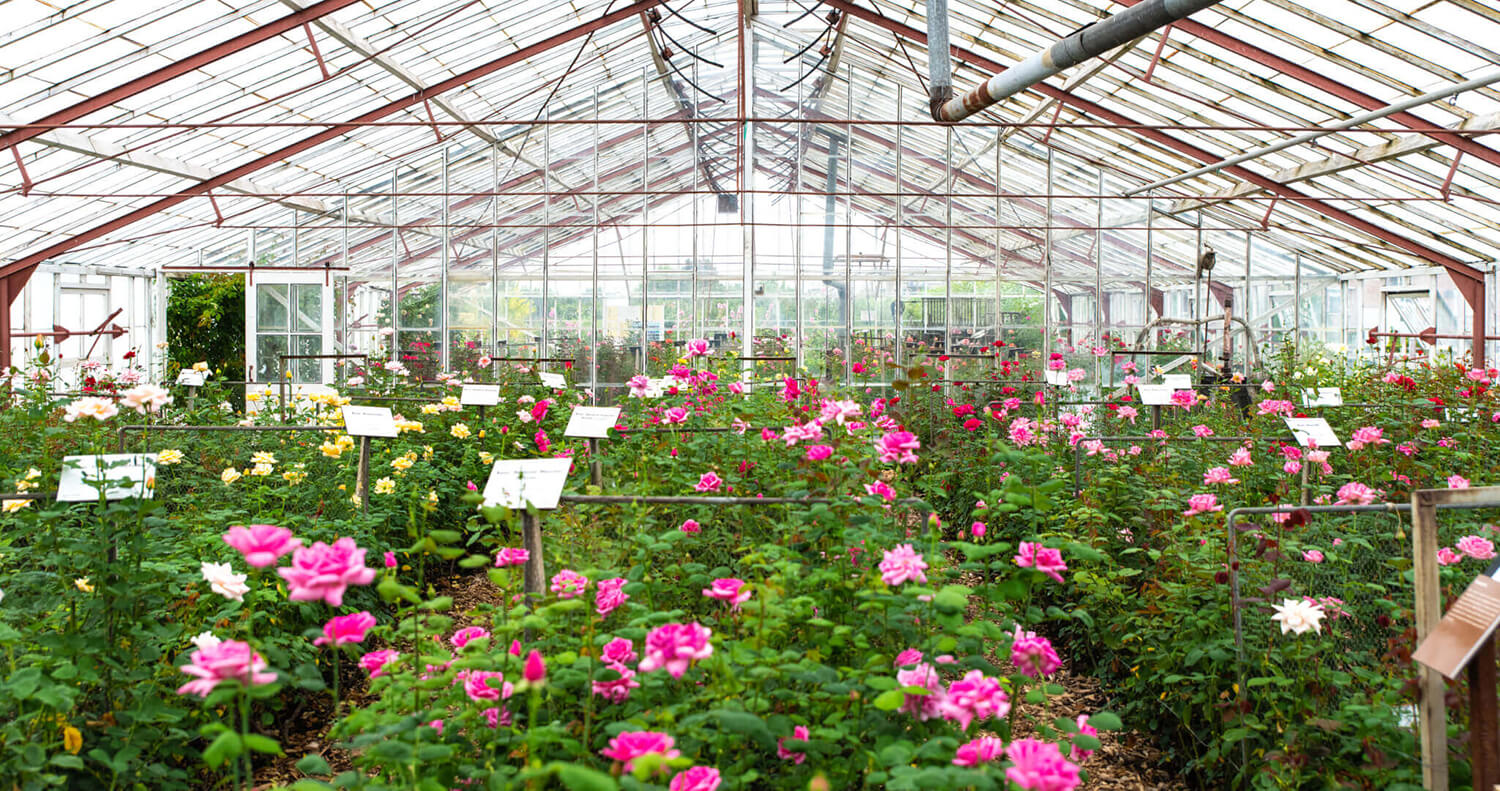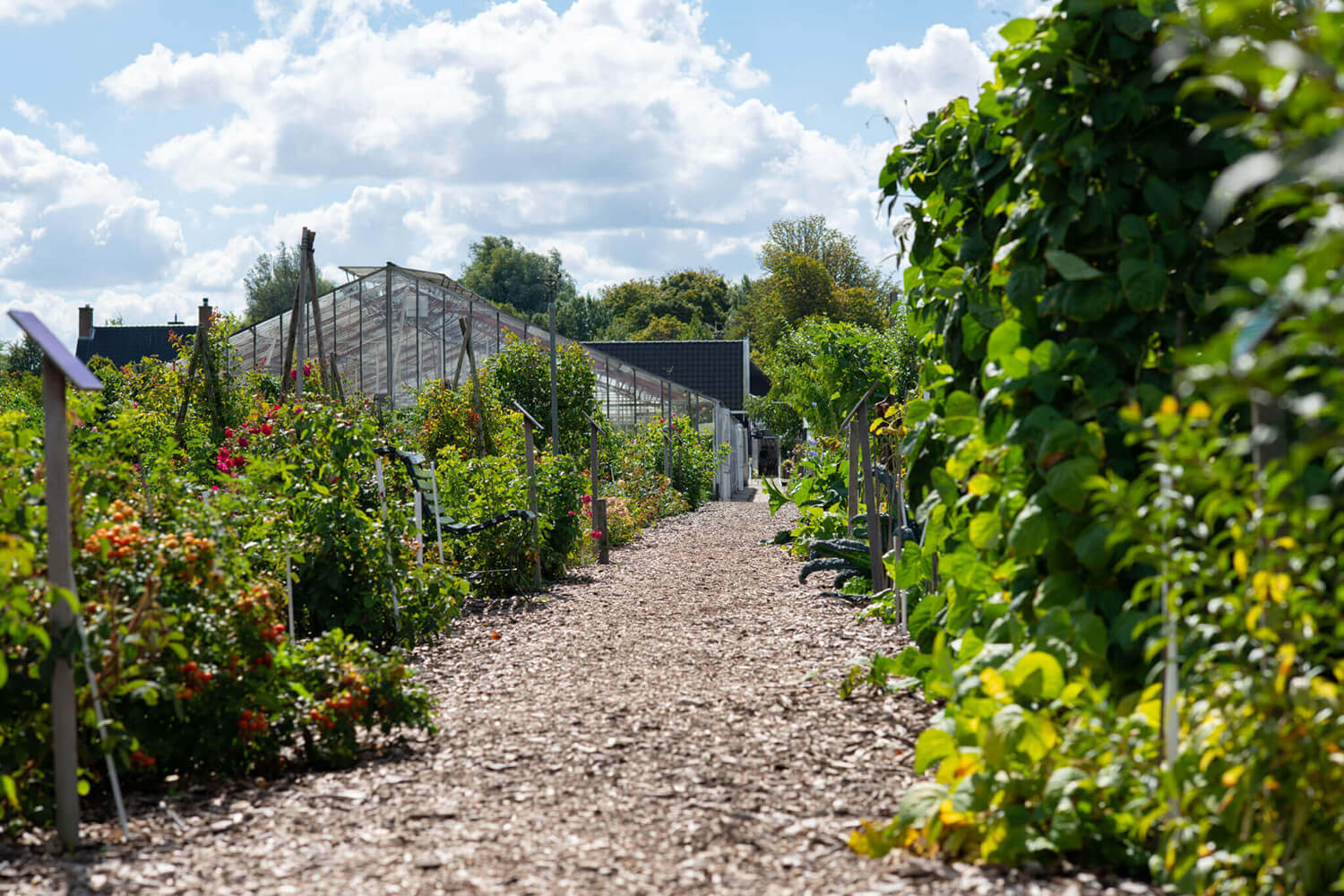An oasis of peace where each season has its own particular charm. September provides a colourful array of Dahlias and May and June offers an abundance of strawberries. The Historical Garden is a joy to walk through. However, it’s also great to hear about the work of the volunteers, the various greenhouses, the flowers, plants, trees and the garden’s history. During a visit to Aalsmeer a guided tour in the Historical Garden is a must, where a volunteer – with an abundance of knowledge, enthusiasm and passion – briefs you about the history of Aalsmeer’s horticulture from 1700 to 1940.
Guided tour of the Historical Garden
Upon arrival at the Historical Garden you will be warmly welcomed by the volunteers and the guide is ready and waiting to take you on an historical journey back in time. During the tour, you walk will take you back from 1940 all the way to the year 1700. The tour starts in the exhibition greenhouse, the auction room with a huge auction clock dating back to 1930 and the shop where flowers and plants are sold. When you cross the threshold, you walk down a narrow path with greenhouses on both sides. Some greenhouses are quite old, but they are all still used, for example, to house lilacs or to keep plants that cannot survive the winter.
You will be led past an extraordinary pear tree with twelve branches which produce twelve different types of pear, an old toilet above a gully, where fifty metres away they washed clothes and vegetables, the boiler house, the carpenter’s hut and the wharf where vessels are tarred and maintained.
Rose Greenhouse
The last greenhouse on the right is not just a greenhouse, this is the rose greenhouse. An explosion of perfume, as here the roses really do still smell of roses. How is that possible? One of the reasons for this is that there is a production of ten to fifteen stems per square metre. Most of the roses you see today are produced on a mass scale of up to over two hundred stems per square metre. While two ladies are working diligently in the rose greenhouse, the guide explains that the Historical Garden has no less than 225 varieties of roses, both indoor and outdoor.

Large outdoor garden
After experiencing the perfume sensation in the rose greenhouse, you can then move on to the expansive garden which displays a huge array of varied flowers and plants. Whilst strolling through the garden, the guide will fill you in about almost everything you see: from bedding plants, outdoor flowers and shrubs to roses, ornamental shrubs and topiary features. You walk further and further into the garden – and its history. Finally, you arrive at the fruit trees and strawberries, the origin of the Aalsmeer horticulture. In the beginning of the 17th century the cultivation of fruit trees was the thing in Aalsmeer. Strawberries were cultivated under the fruit trees, to make the most effective use of the soil as was possible.

Practical info
A guided tour of the Historical Garden takes approximately 75 minutes and is only possible on request. The cost of a guided tour is €30.00 and the maximum group size per guide is fifteen people.
About the Historical Garden in Aalsmeer
This journey through the past takes you through the 450 meters long Historical Garden. It is not only a botanical garden, but also a remarkable place where flower and plant species are preserved. Some species are up to fifty to one hundred years old and there are even species that can only be found in the Historical Garden. If these species don’t survive in the Historical Garden, they will become extinct.
Some interesting facts about the Historical Garden include:
- The Maarsen family donated their nursery to the municipality on the condition that it would be turned into a historic garden. This was back in 1978.
- Maarsen was known for the cultivating of Dahlias, which are also to be found in the Historical Garden.
- The word garden refers to the fact that growers used to call their nursery a garden.
- You will also find an apiary amongst all the flowers and plants Twice a year, the beekeeper will give a demonstration of ‘honey extraction’.
- In the garden you will find a Japanese nut tree, which is the oldest tree species in the world and the only tree with a fan leaf.

Recognizing the volunteers
The eighty to ninety volunteers who work in the Historical Garden deserve to be put in the spotlight. This number of volunteers sounds high, but it isn’t when you see how much work must be done in a garden of 13,000 square meters. Each volunteer has his own specialty. Jan, one of the guides is not just a guide, he is also a specialist in grafting and lilac species. His father developed a type of lilac in the Historical Garden and Jan had lessons from Marijke’s husband at the horticultural school. At the age of 90, Marijke is the oldest volunteer in the garden and has been working here for at least 25 years. If you walk past the carpenter’s hut, you will see volunteers working on tool maintenance needed for the upkeep of the garden, greenhouses and watercraft. Also, you may get to meet the ladies who look after the roses, the expert in charge of cuttings and the guys who care for the vegetables. And of course, so much more. The work the volunteers do is just amazing!
Tip: end the tour of the Historical Garden with a lunch at the Tuinhuis. When the weather is warm, you can sit on the terrace and watch the boats pass by.




